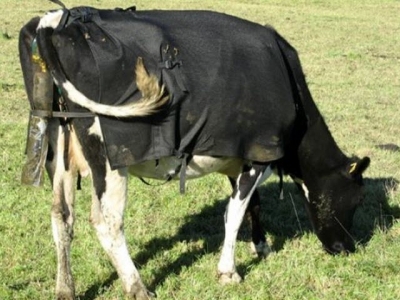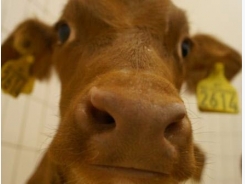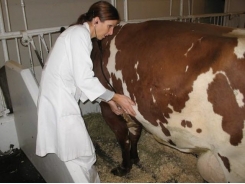New urine sensors to track cows nitrogen excretion

World-leading sensors to guide action against waterway contamination.
In New Zealand, AgResearch has developed world-leading sensors to better understand how nitrogen is being excreted by cows and, therefore, how best to tackle the effects on the environment
The urine sensors, which have been a work in progress since 2010, are attached to grazing dairy cows and take detailed measurements every time the cow urinates, including volume and frequency and, crucially, the concentration of nitrogen in the urine that can potentially leach into soil and waterways and cause damage such as algal blooms.
The benefit of the urine sensors is a much greater understanding of the behavior of the cows, which can help develop techniques to mitigate the nitrogen leaching from farms, AgResearch senior scientist Dr. Brendon Welten said.
“Other sensors exist around the world to provide data from livestock, but these sensors we’ve developed are unique in their ability to record nitrogen concentrations each time the cow urinates during grazing,” Welten explained. “We can learn, for example, how different species of pasture affect the amount of nitrogen excreted in urine.”
The sensors weigh about 1.5 kg and attach to the cow by a harness connected to a lightweight cow cover. They record the data through the use of multiple instruments (temperature, pressure and refractive index), with data stored in a data logger that can be remotely accessed via a wireless network system.
The sensors have already been used in both the U.K. and Australia.
“The operation of the sensors is complex, and at this stage, we are working towards offering the sensors to other researchers around the world to allow them to use the technology to make similar gains,” Welten said.
“AgResearch will have the expertise to support those researchers to use the technology and maximize the benefits from it,” he added.
The sensors have played a part in important progress made in the Forages for Reduced Nitrate Leaching (FRNL) program involving DairyNZ, AgResearch, Plant & Food Research, Lincoln University, the Foundation for Arable Research and Manaaki Whenua (Landcare Research).
“The FRNL results clearly confirm the variability in urinary nitrogen excretion over the day, making it necessary to have many repeated measures. The sensors make this possible,” DairyNZ senior scientist Ina Pinxterhuis said.
“It is also great to see that the options we examine to reduce nitrate leaching do result in lower daily urinary nitrogen excretion and lower nitrogen concentration if not during the whole 24 hours of the day, (then) at least for some parts. This information provides new options for management too,” Pinxterhuis added.
Có thể bạn quan tâm
Phần mềm

Phối trộn thức ăn chăn nuôi

Pha dung dịch thủy canh

Định mức cho tôm ăn

Phối trộn phân bón NPK

Xác định tỷ lệ tôm sống

Chuyển đổi đơn vị phân bón

Xác định công suất sục khí

Chuyển đổi đơn vị tôm

Tính diện tích nhà kính

Tính thể tích ao hồ



 More and more cows are catching colds
More and more cows are catching colds  Grazing reed canarygrass may control invasive plant
Grazing reed canarygrass may control invasive plant